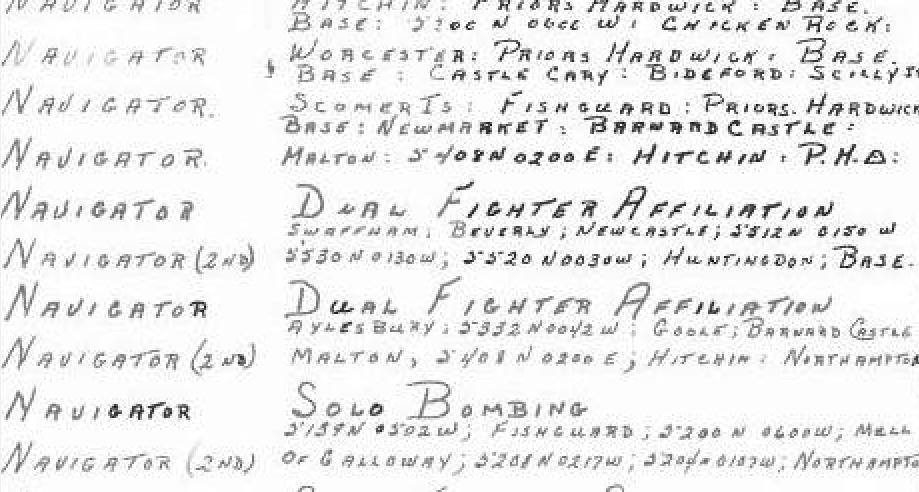
Interaction Training of Fighters and Bombers
The term "Fighter Affiliation" appears in many pilot logs from their times at O.T.U and Conversion Unit training, what actually takes place during these exercises?
Well the best source I have was written by Phillip Gray, a young at heart former WWII Lancaster pilot, you may have met if you had visited the Canadian Air and Space Museum, before it closed it's doors. I spent over an hour with Mr.Gray during my visit he was with the crew of men who were working on restoring Lancaster FM104 at the museum. Well on in his years he moved around the Lancaster restoration area like someone half his age. I had so many questions about a pilots life in the RAF, the training, the off base life and so much more. And he shared it all. As I left I noticed a book with his name as author, he off handily told me about writing it. From his book, "Ghosts of Targets Past" , here is how I summarized what he described of the Affiliation exercise.
The main purpose of this training was to acquaint new pilots to the maneuverability of fighters and how to avoid them. It was no great secret that fighters had the advantage of speed and maneuverability over the slower and much larger bombers. And if a bomber crew were to stand a chance of survival it all hinged on how well the pilot could toss and turn his big bomber around in the sky. An eager pilot from one of the fighter squadrons would act as the "enemy". For the fighter pilot it was a multi-purpose task, practice his attack techniques on a bomber, maybe pick up something new to pass on and quite simply a way to harass some of the bomber boys.
An instructor would be on board for the first or so tries after that it was all up to the pilot. The instructor's direction to the trainee pilot was to "keep it simple" and make every move to the maximum effort. After all this would be a matter of life and death in a real attack, so to in the Affiliation training everything was to the max. Throwing the aircraft around and the crew inside with it.
The instructor, in Phillip Gray's case mentioned that using the intercom to let the crew know what was coming next was a good idea. One that instructor told him may have the crew hating the commentary, but at least they knew what was going on.
The Corkscrew Maneuver
It may sound like a simple turn and dive to one side or the other, in fact that would be just the start, a pilot would get the "corkscrew to .... " order from one of he gunners normally. Although any of the crew who spotted aircraft may give the order. The start of the maneuver was into a dive to one side or the other, the decision of either port or starboard being made by the gunner based on the direction and angle of attack.
The first action may have been enough to throw the attackers aim off, but maybe not the attacking pilot's ability to keep on the bombers tail. During the training the pilots were to put their bombers through a series of climbs and dives, turns to either side, with the whole effect being something like a roller coaster ride.
For the pilot to place the bomber in a corkscrew port, he would have the stick hard forward, foot hard in on the left rudder and wheel fully over to the left. The pilot would have two other things on his mind regarding the attempt to escape. One was not to make the pattern repetitive enough for the fighter to figure out his next move. Secondly try and keep the swings from port to starboard in equal numbers to help the aircraft keep on the same heading.
What Were The Rest of the Crew Doing
The Navigator would try and keep track of where they were at any point in the corkscrew and when the "resume course" order was given, he would forward the course headings to the pilot.
For the training exercise the gunners would be using Cine guns, and trying to keep the "enemy" fighter in their sights or at least pass on the information of his position to the aircraft's captain. The film from the camera guns would be analyzed later judged on many things including point of aim, deflection and range then the gunner would be graded on the results.
Could not find any information on if the Bomb Aimer and Flight Engineer had specific tasks to perform during the corkscrews. I would think everyone would be scanning the skies for any additional attackers and other dangers.
Information from Philip Gray's book Ghosts of Targets Past.A book well worth reading, mentions a number of things I am sure your father, grandfather would never have told you.